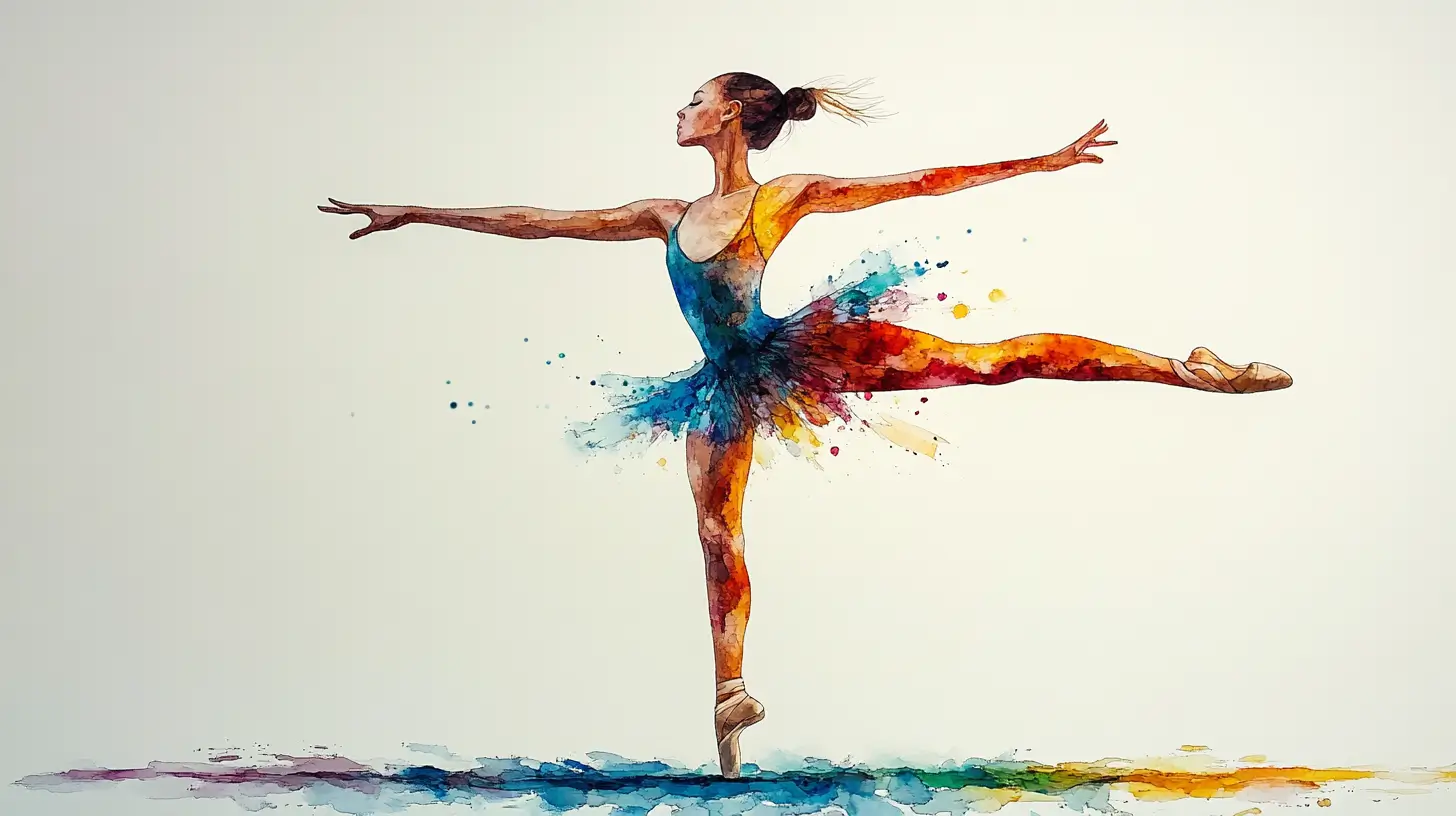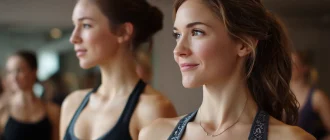Curious about the ballerina arabesque? This foundational ballet pose highlights balance and artistry in dance. In this article, you’ll learn its basic positions, the muscles involved, common mistakes to avoid, and training techniques for a perfect dancer in the ballerina arabesque.
Graceful Insights
- The Arabesque is a key ballet pose that showcases a dancer’s balance and artistry, requiring knowledge of basic positions and historical significance for proper execution.
- A perfect arabesque involves key elements such as proper alignment, hip turnout, and strong supporting leg stability, supplemented by targeted strength and flexibility training.
- Common errors in executing an arabesque include improper leg placement, pelvic tilting, and forcing leg height; correcting these mistakes enhances stability and overall aesthetics.
Art de Podcast
| Aspect | Description |
|---|---|
| Alignment | Ensure the spine is lengthened, the hips are square, and the shoulders are open. |
| Core Engagement | Activate the core to maintain balance and avoid arching the lower back. |
| Leg Position | Keep the supporting leg strong and straight, with the working leg fully extended. |
| Foot Placement | Point the toes of the working leg and maintain turnout throughout. |
| Arm Coordination | Extend the arms gracefully without tension, creating a harmonious line. |
| Eye Focus | Keep your gaze lifted for elegance and confidence in the pose. |
| Breathing Technique | Use deep, controlled breaths to sustain the pose with ease. |
| Use of Opposition | Feel the stretch between the fingertips and toes for a balanced and dynamic line. |
| Practice Drills | Perform exercises such as arabesque hold against a barre to improve stability. |
| Common Mistakes | Avoid dropping the hips, bending the supporting knee, or losing turnout. |
Understanding the Arabesque
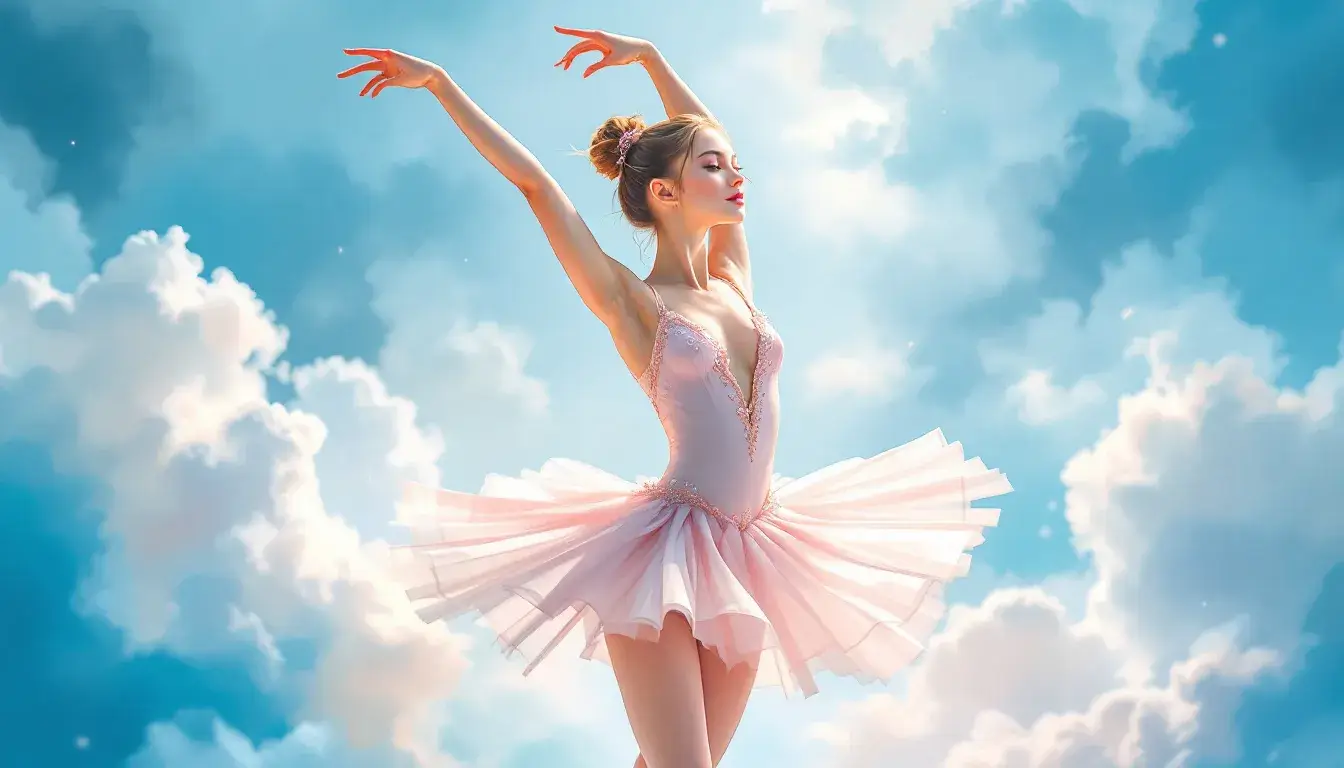
In classical ballet, the Arabesque is a quintessential and exquisite stance highlighting a dancer’s stability and creative expression. In this position, one leg bears the body’s weight. In contrast, the dancer’s other leg extends backward into the air, crafting an impressive visual line that accentuates elegance and exactness. The Arabesque not only exhibits adept technical prowess but also contributes an air of gracefulness and aesthetic enhancement to a dancer’s routine.
Dancers must understand an arabesque’s fundamental postures and historical context to create and master it. Recognizing its origins and diverse variations enables performers to develop and execute this pose with a knowledge-backed purpose.
Historical Background
The arabesque dance, originally more earthbound and modest in elevation, originated from 16th-century Italian traditions. Carlo Blasis was the first to explicitly link the term ‘arabesque’ with dance, highlighting its aesthetic appeal and seamless movement.
As it developed through several variations, the Arabesque became an iconic stance within classical ballet, showcasing a performer’s poise and creative expression.
Basic Arabesque Positions
Various forms exist within the fundamental arabesque stances, all defined by distinctive arrangements of the arms that yield unique aesthetic impressions. An arm distinguishes the inaugural Arabesque stretched out in front, and another extended to the side, forming a harmonious line.
On the other hand, arms are fashioned into a curved contour in the second Arabesque, augmenting its visual allure. The Arabesque has several variations, each defined by distinctive arm arrangements that yield unique aesthetic impressions.
Comprehension of these foundational poses is crucial for performing an aesthetically pleasing arabesque.
Key Elements of a Perfect Arabesque

Achieving a perfect arabesque is a testament to the ballet dancer’s equilibrium and elegance. It demands considerable power and precision, as the body must maintain poise and remain still while one leg stretches rearward.
This position contributes to aesthetic magnificence and highlights the intricate strength and mastery required in ballet. Every component, from proper alignment to securing the stability of the supporting leg, is crucial for executing an impeccable arabesque.
To enhance your arabesque ability, it is imperative to concentrate on fortifying your physique rather than solely focusing on flexibility exercises. Establishing robust core muscles and proficient control over pelvic and hip areas significantly boosts performance quality.
We are exploring the environment. These critical aspects reveal what it takes to attain an exemplary Arabesque, a symbol of skillful artistry in dance.
Alignment and Posture
To execute an arabesque with grace and balance, the spine must be straight, the shoulders must align with the hips, and the torso must remain upright. Exercises designed to enhance stability and trunk control, such as airplane movements, can help achieve this.
Activating back extensors is important for maintaining a properly arched spine throughout an Arabesque. This technique stabilizes the upper body while facilitating lift and extension in the working leg. Employing the correct technique greatly improves functionality and visual appeal by enhancing line quality during this ballet position.
Turnout and Hip Placement
When performing an arabesque, achieving the proper turnout is essential for maintaining aesthetic appeal and stability. The outward rotation of the feet from the floor to the hip improves the line’s appearance.
To ensure accurate leg and foot positioning in the air in preparation for an arabesque, it is beneficial to practice tendu derrière.
Supporting Leg Stability
Maintaining equilibrium and mastering control during an Arabesque move requires a robust supporting leg. Merely focusing on stretching extensively may not lead to enhanced height in the arabesque position performed.
Rather, incorporating strength training exercises can be more effective. The supporting leg’s fortitude guarantees the body’s stability and prevention of tilting during this motion.
Muscles Engaged in an Arabesque

Performing an arabesque activates many crucial muscle groups, contributing to balance, stability, and visual grace. The hip extension, gluteal, and hamstring muscles play pivotal roles in this movement. Back extensors are engaged to maintain proper spinal posture. Activating the legs and core muscles is also critical for sustaining enhanced balance and steadiness during the execution of an arabesque.
Understanding which specific muscle groups are involved aids dancers in their training regime as they strive for excellence in achieving a polished arabesque position.
Back Extensors
During an arabesque lift, back extensors are vital for keeping the shoulders and spine straight as they assist in elevating the working leg. They ensure stability and support, which is imperative for sustaining the extended position of the standing leg, which defines the elegance of an arabesque.
Hip Extensors
Hip extension is heavily relied upon during an arabesque to elevate the working leg and feet and properly turn out the working leg. These muscles are instrumental in regulating hip turnout, a key aspect of executing an arabesque with high quality.
Core Muscles
Engaging core muscles maintain balance and control during an arabesque, preventing forward or backward tipping. Exercises like planks develop core stability and pelvic control, which are essential for a strong arabesque.
Common Mistakes and How to Avoid Them
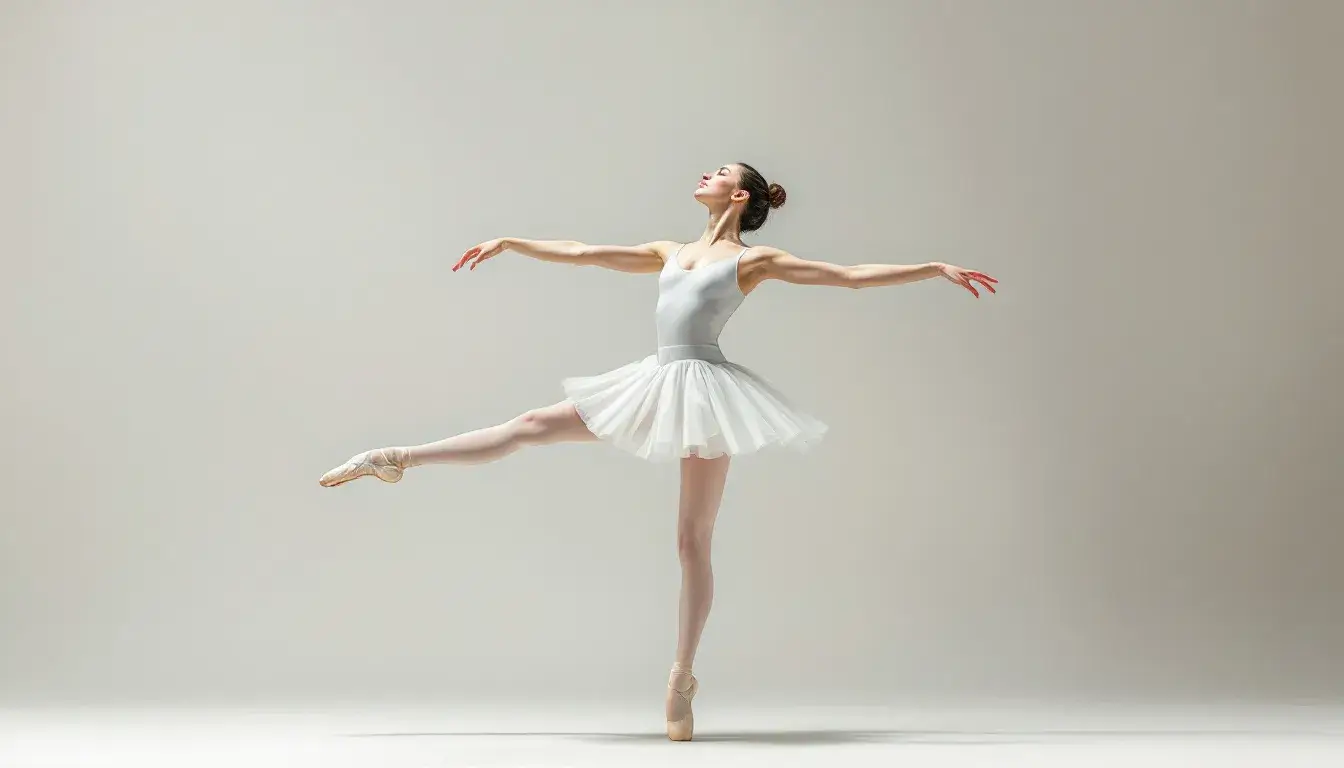
Frequently, dancers encounter typical errors such as incorrect leg placement, pelvic tilt, and striving for excessive leg and shoulder height in an arabesque. These mistakes can cause issues with alignment and balance, potentially resulting in injury. Emphasizing correct technique rather than extreme leg elevation improves this position’s stability and visual appeal.
An overemphasis on elevating the back foot, hips, or standing leg can unfavorably alter a dancer’s posture, impacting their equilibrium and the beauty of their form. Below are familiar mistakes to avoid and suggestions for avoiding them.
Improper Leg Placement
Correct leg and foot placement are key to achieving aesthetics and balance in an arabesque. Dancers should practice finding their foot placement in the tendu derrière before lifting the back leg.
Regular leg alignment drills enhance overall performance and technique.
Tilting Pelvis
Engaging the core offers stability and control. It helps prevent an excessive forward tilt of the head toward the pelvis floor, which can restrict turnout and lead to misalignment of the torso, head, and shoulder. This is especially important during an arabesque.
Forcing Leg Height
They are forcing the standing leg too high, which can cause serious injuries, such as stress fractures or back strains. Dancers should achieve height through proper technique, not by forcing the leg further up the floor.
Training Techniques for a Better Arabesque
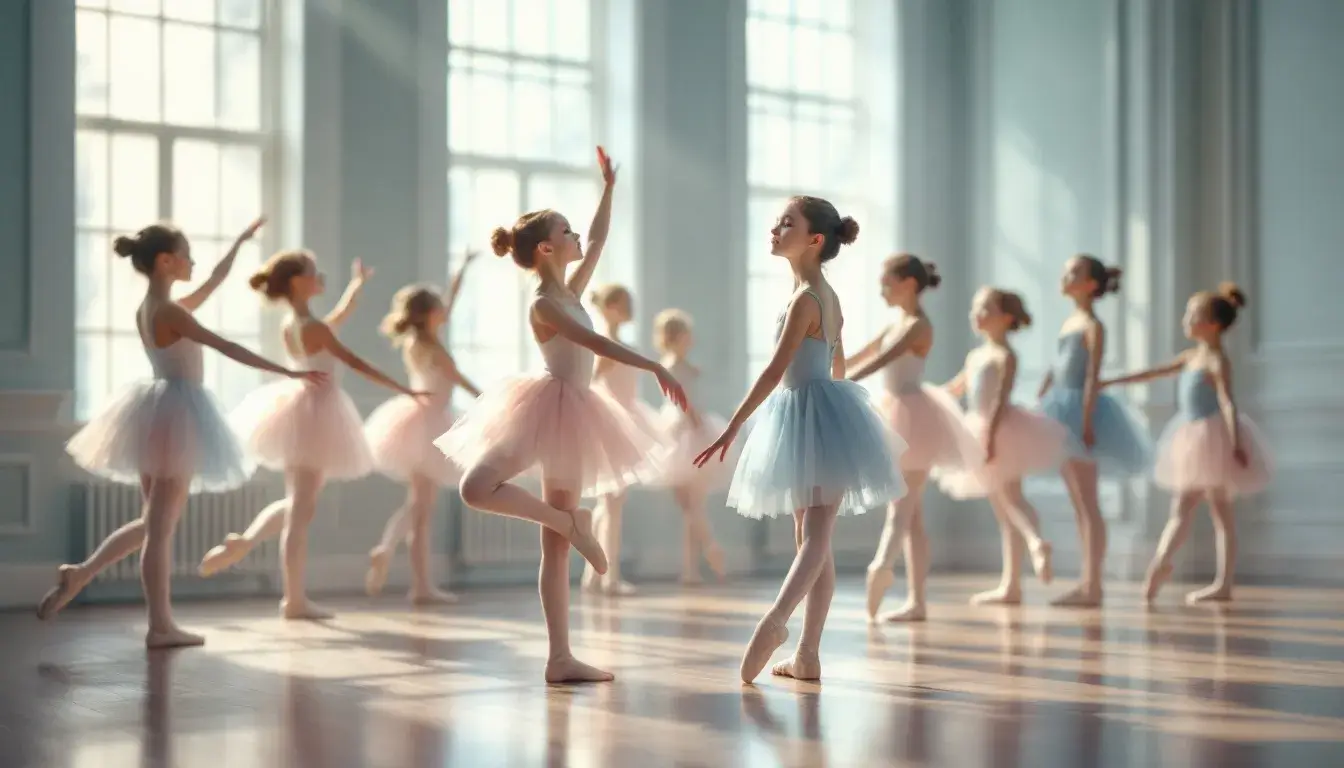
A flawless arabesque combines strength, flexibility, and balance. Mastering a high arabesque requires strength in the back, hamstrings, and glutes, not just flexibility. Floor practice of arabesque positions enhances muscle engagement and alignment without balancing challenges.
Using a barre for arabesque training develops strength and flexibility across muscle groups. Here are specific training techniques to help achieve a better arabesque.
Strengthening Exercises
Bridges help develop hip strength and pelvic control, which are essential for maintaining a proper standing arabesque. Performing hip extensions with rotation targets the hip and glute muscles necessary for maintaining balance in an even standing arabesque.
Strengthening exercises develop the muscle control and stability needed for a flawless arabesque.
Flexibility Drills
Regular flexibility training improves the range of motion necessary to perform an elevated arabesque. By focusing on specific stretching exercises, one can achieve a greater range of motion, leading to an elegant and higher level of Arabesque.
Balance and Control Practices
A strong, stable supporting leg is essential for a balanced and poised arabesque position. Engaging the core muscles provides the necessary support and control to achieve balance.
When the stability of the supporting leg is harmonized with core muscle engagement, the arabesque posture is elegantly and polishedly executed.
The Role of Arms in an Arabesque
Arm and shoulder positioning enhances the aesthetic of the arabesque line. A beautiful arabesque is characterized by a finely extended leg and an upright torso, shoulders, and elbows, creating a straight line from the fingertips to the pointed toe. The arms contribute to visual harmony and the overall aesthetic of the pose.
Let’s explore the different arm positions and how they enhance the Arabesque’s visual appeal.
Arm Positions
Arm positions create the desired line and balance in an arabesque, affecting its overall appearance. The first Arabesque features one arm in front. In comparison, the second Arabesque has the fingers of one arm overhead. The arms are ideally extended at shoulder or slightly above shoulder height to create visually appealing lines in the dancer’s posture and legs.
The choice of arm position can change the Arabesque’s aesthetic, drawing attention to the legs, upper body, or overall form.
Coordination and Grace
The practice of Arabesque necessitates synchronizing balance, strength, and gracefulness to augment a dancer’s poise. Combining diverse head and arm postures with leg stretches, the refinement of an arabesque’s visual appeal is heightened.
Achieving an impeccable arabesque entails arranging the body to form a seamless line extending from the fingers to the toes, creating aesthetic congruity.
Tips from Professional Dancers
Expert dancers highlight the importance of perfecting an arabesque to deliver a captivating performance. They stress that regular training to boost core strength and improve flexibility is crucial for achieving equilibrium and refining the posture required for an impeccable arabesque. These professionals divulge wisdom from their experiences, providing indispensable advice to dancers across various skill levels.
Below, you will find narratives of personal encounters with the art form alongside professional recommendations designed to assist in mastering the Arabesque.
Personal Experiences
A ballet dancer conveyed how embarking on the journey of ballet at an older age enhanced their flexibility and strength, aspects that other forms of exercise had not fostered. These insights shed light on ballet’s remarkable capacity to bolster one’s self-assurance and fortitude.
Dancers frequently recounted struggles with overcoming feelings of inadequacy and a sense of being an outsider in the school classes where females were the majority.
Pro Tips
Consistent practice at home helps dancers build the muscle memory necessary to execute an impeccable arabesque. By adding a diverse range of exercises into their routine, practitioners can achieve a more comprehensive improvement in perfecting this classical ballet posture.
Drop-in ballet classes allow dancers to maintain their abilities, boost self-assurance, and receive instant teacher critiques.
Resume
One must grasp its rich historical context and meticulously refine its posture and positioning while sidestepping prevalent errors to excel in the Arabesque. Concentrating on building strength, enhancing flexibility, and maintaining balance are crucial.
Gleaning knowledge from seasoned ballet dancers can significantly inform your approach to perfecting this pose. Though attaining perfection is an ongoing endeavor, steadfast commitment and practice will enhance your ballet displays immensely. Persist in pursuing superiority. Let the Arabesque stand as a testament to your elegance and creative expression.

